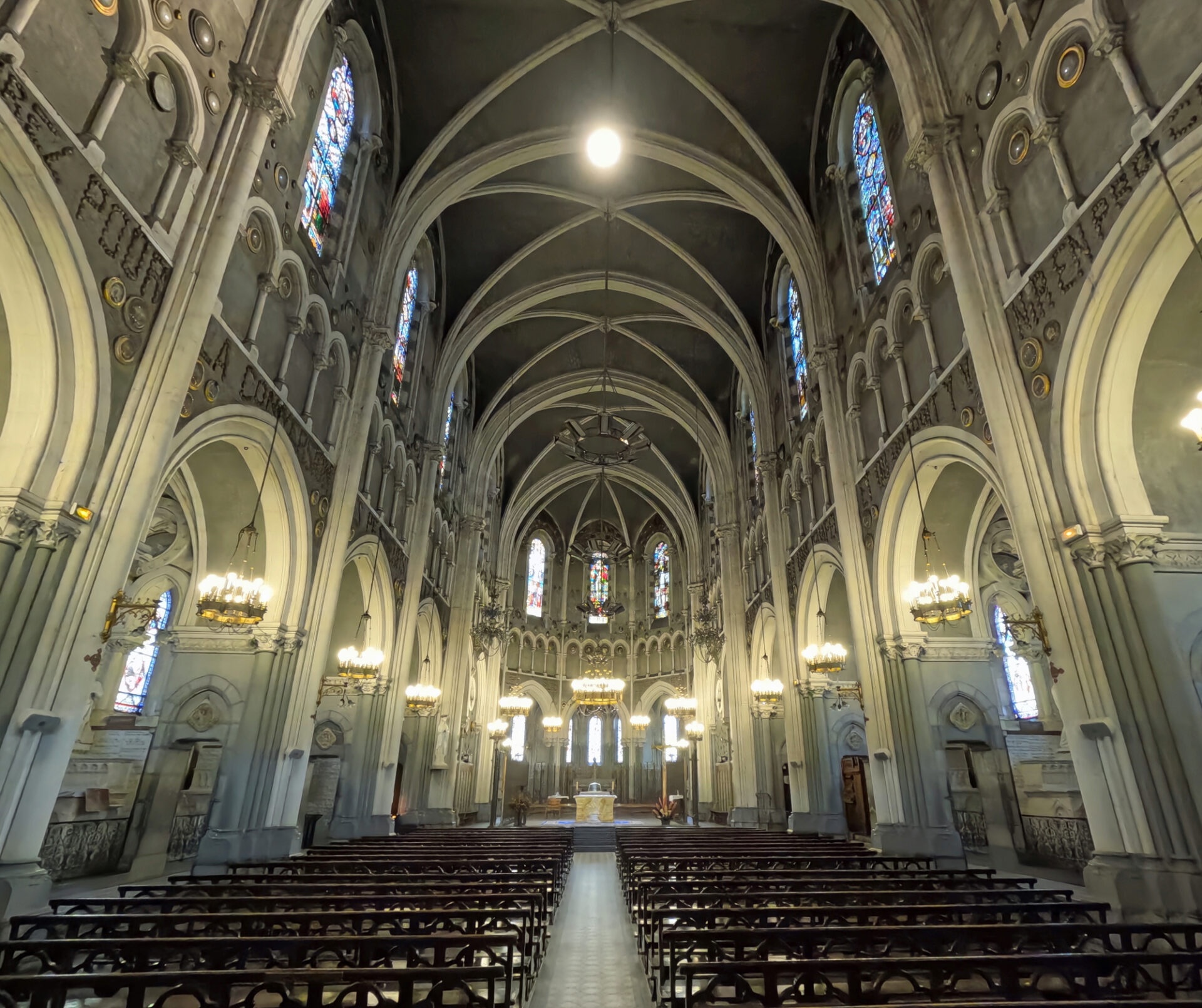
Lourdes was added to our southern France itinerary because like Rocamadour, I saw it while watching the 2024 Tour de France and was intrigued. So here we are!!
Nestled in the foothills of the Pyrenees in southwestern France, Lourdes is a town with profound historical and spiritual significance. Known worldwide as a place of pilgrimage, Lourdes attracts millions of visitors each year. It is estimated that more than six million people come to Lourdes annually, seeking spiritual renewal or physical healing. A good reason to be happy we are here in late November when the majority of visitors have all gone home.

Lourdes’ claim to fame is rooted in a religious event that took place in 1858. A young girl named Bernadette Soubirous, living in the town at the time, reported seeing a series of visions of the Virgin Mary in a cave near the Grotto of Massabielle. In these visions, the Virgin Mary identified herself as the “Immaculate Conception” and urged Bernadette to pray and do penance. The site soon became a pilgrimage destination, attracting Catholics from around the world.
The Sanctuary of Our Lady of Lourdes is a vast complex and home to several key religious sites, including:
The Grotto of Massabielle – This is the exact spot where Bernadette experienced her visions. Pilgrims often visit to pray, light candles, and collect water from the sacred spring that flows from the grotto. The water has long been believed to have healing properties. Yes, we joined the line to get a few drops of the healing water…can’t hurt right 😁

The Basilica of Immaculate Conception – Initiated in 1866, it is the chapel requested by the Virgin Mary during the 13th apparition: “Go and tell the priests to build a chapel here and that people should come in procession”

The Basilica of our Lady of the Rosary – Filled with an incredible 2,000 m² of mosaics created by the Italian Facchina workshop and based on drawings by many artists. (click on any image to enlarge)
In response to the growing number of pilgrims, the Basilica of St Pius X was inaugurated in 1958 for the 100th anniversary of the apparitions. This underground basilica is like no other we have seen, built with massive pre-stressed concrete supports it can hold 25,000 people and resembles a brutalist bunker more than a basilica.

The Fortified Castle of Lourdes, perched on a hilltop, is one of the most iconic landmarks in the town. Originally built in the 11th century, the castle was later renovated and now houses the Pyrenean Museum
Lourdes is not only a spiritual destination but a gateway to the Pyrenees, an ideal base for exploring the breathtaking beauty of the surrounding mountains. The region is a paradise for outdoor activities such as hiking, cycling, and skiing in the winter months and with the steep and narrow mountain roads, an ideal place for some of the toughest climbs in the Tour de France. In fact, we took a drive up the road to the Col de Tourmalet, famous on the Tour de France, but being very close to ski season, the road to the summit was closed already. The views were spectacular even from below the summit, and interestingly there were a few llamas wandering around the ski resort.
A couple of days in Lourdes was more than enough to see the sights. Next up, a quick dip into Spain as we continue our way south…..










